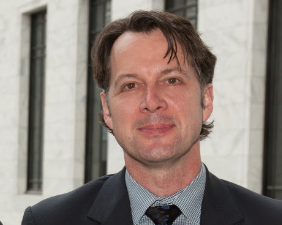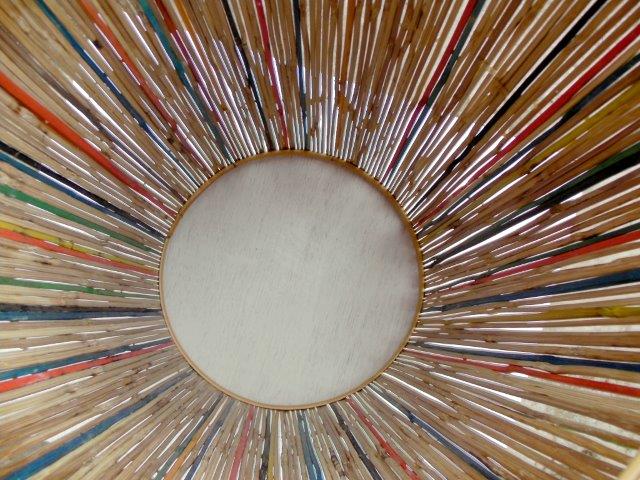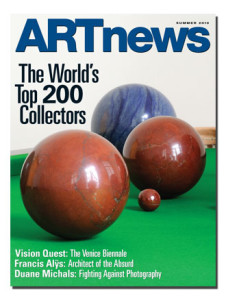It’s never the crime, it’s the cover-up. Watergate, among other scandals, proved that and the forced resignation, aka firing, of David Franklin (below left) as director of the Cleveland Museum of Art last month, is showing it once again.
 Three articles have more details. First, Cleveland Scene, which was the first (I believe) to go beyond the spoon-fed resignation story, has written Turmoil at the Museum: Inside the Affair, Suicide and Abrupt Resignation That Rocked the Cleveland Museum of Art . It says, among other things, that the board terminated Franklin because he had repeatedly lied about the affair he had with a former CMA staffer, who later committed suicide. It then points out that the board also lost credibility because it lied. Among the key passages:
Three articles have more details. First, Cleveland Scene, which was the first (I believe) to go beyond the spoon-fed resignation story, has written Turmoil at the Museum: Inside the Affair, Suicide and Abrupt Resignation That Rocked the Cleveland Museum of Art . It says, among other things, that the board terminated Franklin because he had repeatedly lied about the affair he had with a former CMA staffer, who later committed suicide. It then points out that the board also lost credibility because it lied. Among the key passages:
[Board chairman Steve]Â Kestner’s (below right) comments had mutated materially every time a new story appeared, contradicting statements he made earlier and fudging timelines.
“We fucked up, okay? We fucked up,” the trustee admitted. “We tried to control the story and we couldn’t control the story.”
Then:
The trustee confirmed that information had been laundered for both the public and museum staff — “It was more leaving out information than trying to mislead” — in part because the details of the affair and Christina Gaston’s death seemed too personal, too voyeuristic.
Odd, then, that this trustee claimed he was “offended” people thought the affair itself led to the museum’s “parting of ways” with Franklin. After all, that was the museum and Kestner’s line, trumpeted repeatedly by the Plain Dealer. If not the affair itself, then…
“[Franklin] lied to us!” the trustee said. “He lied to us directly, with no lack of clarity, over a protracted period of time. He ruined any trust there was there.”
The irony, of course, is that lying — directly, with no lack of clarity — and ruining trust is precisely what Steve Kestner and the board leadership have been doing since long before the Franklin story broke.
 Scene’s story goes heavily into the details of the death, Franklin’s whereabouts when, her missing cell phone, etc., but we’re sticking with museum issues here. It then says:
Scene’s story goes heavily into the details of the death, Franklin’s whereabouts when, her missing cell phone, etc., but we’re sticking with museum issues here. It then says:
Early last year the museum hired an attorney to investigate [the possible affair] but, “The inquiry yielded no credible evidence to substantiate an inappropriate relationship and the inquiry was closed at that time,” Kestner wrote in his statement to the Plain Dealer. “We believe that it would have been irresponsible to take action based solely on rumors.”
Swift action was taken, according to the chairman, once they saw the police report: “In early October, for the first time and based on new information, the Board confirmed that a dating relationship had existed with a former employee during and after her employment at the Museum. Once the relationship was confirmed in early October, the Board acted expeditiously.”
However, documents show an attorney for the Cleveland Museum of Art contacted Ron Flower in September asking who the detective in charge of the investigation was. Kestner amended his version of events again to say yes, the museum knew of the police report in September but did not obtain proof of the relationship until October.
Rightly, this story addresses board responsibilities.
The Cleveland Plain-Dealer has two relevant articles. Lying about affair led to David Franklin leaving top job at the Cleveland Museum of Art, board chairman says relies very heavily on official comment, mainly from Kestner. A bit too credulous, imho.
And it also published The Cleveland Museum of Art cancels a major show planned by David Franklin, who resigned as director in October. That exhibition, Exporting Florence: Donatello to Michelangelo, was to be a major international loan show, and would have been spectacular.  Instead, the CMA will enlarge its previously planned exhibition of Surrealist photographs. What a letdown.
Photo Credits: Courtesy of the Cleveland Plain-Dealer (top); Baker Hostetler (bottom)




